Cheadle, Staffordshire
Up to 1834
Cheadle had a parish workhouse from at least 1761. A Parliamentary report of 1777 recorded a workhouse in Cheadle as having accommodation for up to 150 inmates. Also listed was a workhouse at Ipstones accommodating 20.
In 1773-5, a new purpose-built workhouse was erected in Cheadle at the south side of Bank Street. It was a two-storey building with a T-shaped layout. In a brief history of the establishment, Short (1987) provides some entries from the Cheadle Vestry records:
- 27th September 1761 — it was recorded "that an overseer of the Workhouse be appointed and a salary or allowance fixt for such overseer".
- 29th November 1772 — "that Mr. Howard Norton to be Surgeon Physician and Midwife to the people of the workhouse or elsewhere be paid £4.10 shillings for the whole year and if the overseers should think him deserving of it, he should have ten shillings more at the end of the year".
- 29th August 1773 — "George Barnett to be continued in his office as manager of the workhouse till Easter week on the usual terms."
- On the first Sunday in September 1773 after evening prayer a Vestry meeting was held and a resolution "To build a workhouse was passed".
- 25th September 1775 — the new workhouse was opened "and the inhabitants of the old workhouse be removed to the new one. The workhouse has 100 inmates and the old workhouse be let for the remainder of the lease for the benefit of the Parish".
- 22nd August 1779 — "John Meredith and his wife were appointed Governor and Governess of the Poor, at the yearly salary of £20 and their maintenance".
- April 1794 — "James Hoggins and his wife were appointed for 7 years at a salary of £40 per year plus reasonable maintenance".
Whiston, near Kingsley, erected a parish workhouse in the early 1800s.
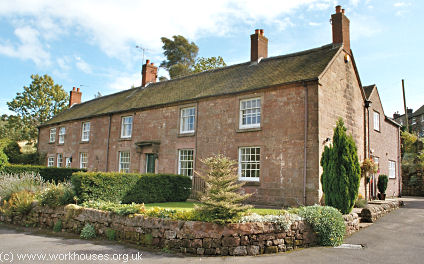
Whiston former parish workhouse, 2004.
© Peter Higginbotham.
After 1834
The Cheadle Poor Law Union formally came into being on 31st May 1837. Its operation was overseen by an elected Board of Guardians, 23 in number, representing its 15 constituent parishes as listed below (figures in brackets indicate numbers of Guardians if more than one):
County of Stafford: Alton alias Alveton (2), Bradley-in-the-Moors, Cheadle (4), Cauldon, Caverswall, Checkley and Tean (2), Cheddleton and Basford (2), Consall alias Cunsall, Cotton, Denstone, Dilhorne, Draycott-in-the-Moors, Farley, Ipstones (2), Kingsley and Whiston (2).
The population falling within the Union at the 1831 census had been 14,473 — ranging from Bradley-in-the-Moors (population 75) to Cheadle itself (4,119).
The new Cheadle Union took over the existing Cheadle parish workhouse which was extended to accommodate 150 inmates. In 1838, the Poor Law Commissioners authorized an expenditure of £1,500 for this work.
The workhouse location and layout are shown on the 1898 map below:
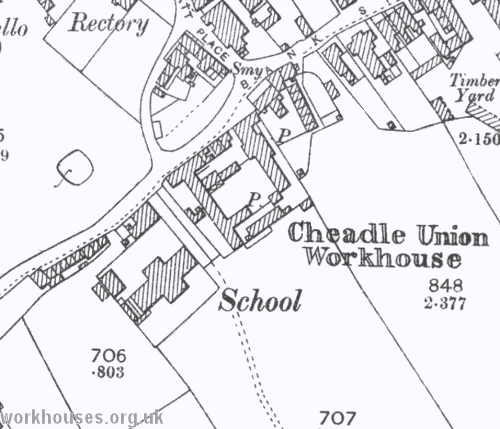
Cheadle workhouse site, c.1898.
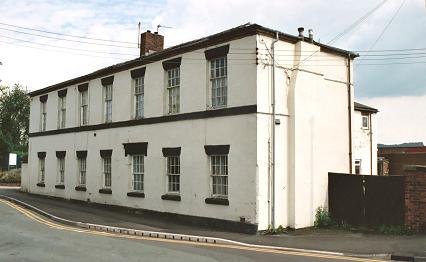
Cheadle from the west, 2002.
© Peter Higginbotham.
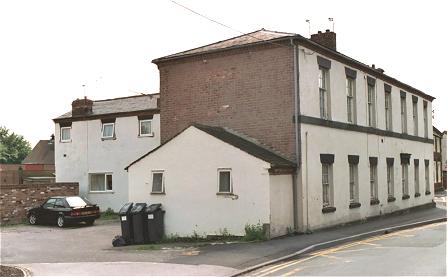
Cheadle from the north-east, 2002.
© Peter Higginbotham.
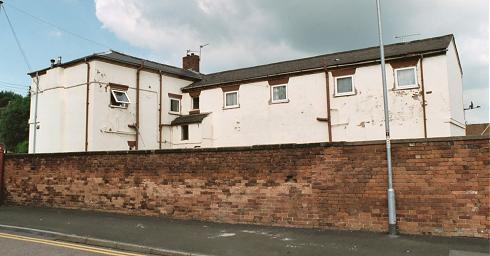
Cheadle from the south, 2002.
© Peter Higginbotham.
In 1900-02, a new 54-bed infirmary costing £10,000 was erected to the south of the workhouse designed by JT Snape of Newcastle. The three-storey building comprised a central block containing a dispensary and nurses rooms, and two ward wings — one for males and one for females. The first floor of each wing contained isolation rooms while the upper floor had a large ward with various rooms, including a sitting room for convalescents.
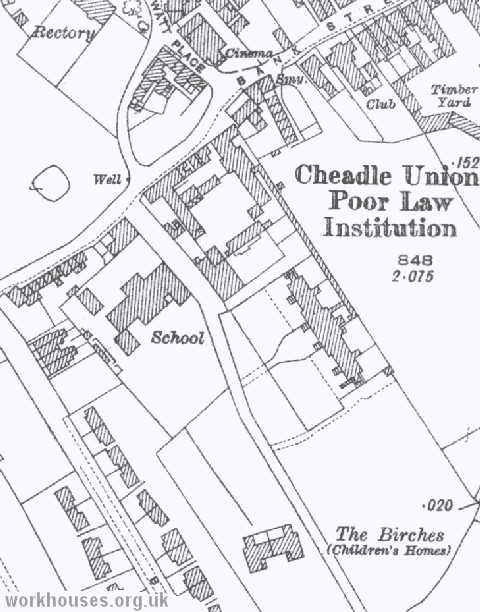
Cheadle workhouse site, c.1924.
Cottage Homes
At about the same time as the new infirmary was built, the Cheadle Guardians erected cottage homes for pauper children at the south of the workhouse site. Known as 'The Birches', in 1924 the homes (one for boys and one for girls) could accommodate 26 children, with Mr A.C. Holbrook as Superintendent.
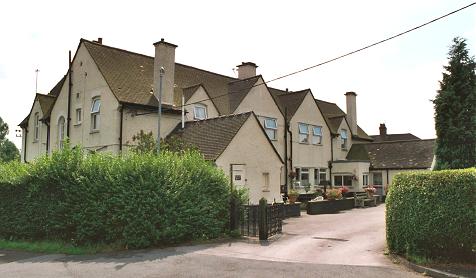
Cheadle cottage homes from the north, 2002.
© Peter Higginbotham.
In 1930, the workhouse was taken over by Cheadle Rural District Council and became known as Cheadle Public Assistance Institution. The site later became Cheadle Hospital until its closure in 1987. Only the original 1775 building and the cottage homes now survive.
Staff
Inmates
Records
Note: many repositories impose a closure period of up to 100 years for records identifying individuals. Before travelling a long distance, always check that the records you want to consult will be available.
- Staffordshire Record Office, Eastgate Street, Stafford, ST16 2LZ. Holdings include Guardians' minute books (1837-1930); Ledgers (1864-1930); etc.
Bibliography
Links
- None.
Unless otherwise indicated, this page () is copyright Peter Higginbotham. Contents may not be reproduced without permission.


